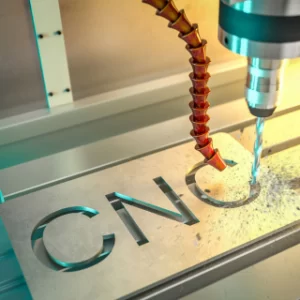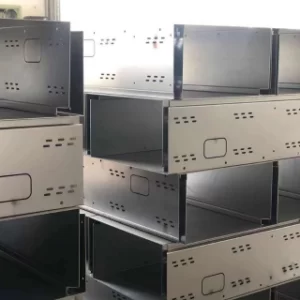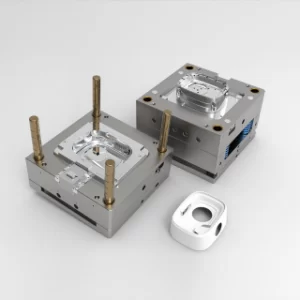What Are the Emerging Trends Shaping the Future of Custom CNC Cutting Technology?
Custom CNC cutting is a revolutionary process that has transformed the way manufacturers and designers approach fabrication. At its core, CNC (Computer Numerical Control) technology involves the use of computerized systems to control machine tools, enabling precise and efficient cutting operations. Custom CNC cutting takes this technology a step further by tailoring the process to specific design requirements and material properties.
Understanding CNC Technology
1.1 Evolution of CNC Technology
CNC technology has evolved significantly since its inception in the mid-20th century. Initially developed for aerospace and automotive industries, CNC machines have become increasingly accessible to a wide range of applications, including woodworking, metalworking, and prototyping.
1.2 Custom CNC Cutting: An Overview
Custom CNC cutting refers to the process of using CNC machines to cut materials according to unique specifications. Whether it's intricate patterns, complex shapes, or precise dimensions, custom CNC cutting offers unparalleled versatility and accuracy compared to traditional methods.
1.3 Applications of Custom CNC Cutting
The applications of custom CNC cutting are virtually limitless. From creating prototypes and one-of-a-kind designs to mass-producing intricate components, industries ranging from manufacturing and engineering to art and architecture benefit from the precision and efficiency of custom CNC cutting.
The Process of Custom CNC Cutting
2.1 CAD Software: Designing the Blueprint
The custom CNC cutting process typically begins with the creation of a digital design using CAD (Computer-Aided Design) software. Designers can meticulously plan every detail of the project, including dimensions, angles, and intricate features, ensuring precise execution during the cutting stage.
2.2 CAM Software: Generating Toolpaths
Once the design is finalized, CAM (Computer-Aided Manufacturing) software is used to generate toolpaths that guide the CNC machine's cutting operations. CAM software translates the digital design into a series of commands that dictate the movement of the cutting tool, ensuring optimal efficiency and accuracy.
2.3 CNC Machine Setup and Operation
With the toolpaths generated, the CNC machine is set up according to the specifications of the material being cut and the design requirements. Operators carefully calibrate the machine, load the appropriate cutting tools, and input the necessary parameters before initiating the cutting process.
2.4 Precision and Accuracy
Precision and accuracy are paramount in custom CNC cutting. Even the slightest deviation from the intended design can compromise the integrity of the final product. Through meticulous calibration, quality control measures, and skilled operation, custom CNC cutting ensures consistency and repeatability in every project.
Materials Suitable for Custom CNC Cutting
3.1 Wood: Versatile and Durable
Wood is one of the most popular materials for custom CNC cutting due to its versatility, availability, and aesthetic appeal. Whether it's crafting intricate furniture pieces, detailed carvings, or architectural elements, CNC machines can cut wood with precision and finesse.
3.2 Plastic: Lightweight and Moldable
Plastic materials such as acrylic, PVC, and ABS are also ideal for custom CNC cutting. From signage and displays to prototypes and packaging, CNC machines can easily cut and shape plastic materials to exact specifications, offering durability and flexibility in design.
3.3 Metal: Strength and Durability
Metal cutting presents unique challenges due to its hardness and density, but custom CNC cutting can overcome these obstacles with ease. Whether it's stainless steel, aluminum, or brass, CNC machines equipped with specialized cutting tools can precisely shape metal components for various industrial and artistic applications.
Case Studies: Successful Applications
4.1 Prototype Development for Automotive Industry
Insight Prototype Co., Ltd. utilized it to develop prototypes for a leading automotive manufacturer. By leveraging advanced CAD/CAM software and state-of-the-art CNC machines, they were able to produce intricate components with exceptional precision and efficiency, accelerating the product development process.

4.2 Artistic Sculptures and Installations
In collaboration with renowned artists and designers, Insight Prototype Co., Ltd. has produced stunning sculptures and installations using it techniques. From large-scale public art projects to intricate museum exhibits, CNC technology has enabled artists to bring their visions to life with unparalleled precision and detail.
4.3 Architectural Elements and Interior Design
Custom CNC cutting has revolutionized the field of architecture and interior design, allowing for the creation of bespoke elements and furnishings. Insight Prototype Co., Ltd. has worked closely with architects and designers to fabricate custom staircases, wall panels, and furniture pieces, enhancing the aesthetic appeal and functionality of residential and commercial spaces.
Design Considerations for Custom CNC Cutting
Designing for custom CNC cutting requires careful consideration of various factors to ensure optimal results.
5.1 Factors to Consider
When designing for CNC cutting, designers must take into account the capabilities and limitations of the CNC machine, including maximum cutting dimensions, tooling options, and material compatibility.
5.2 Importance of Tolerances and Clearances
Tolerances and clearances play a crucial role in CNC design, as they determine the accuracy and fit of the final product. Designers must specify precise tolerances to achieve the desired level of accuracy, while also accounting for clearances to ensure proper assembly and functionality.
5.3 Optimizing Designs for Efficiency
To maximize efficiency and minimize production time, designers can employ various techniques to optimize their designs for CNC cutting. This includes reducing unnecessary tool changes, minimizing material waste, and strategically arranging parts for nesting.
5.4 Nesting and Waste Reduction Strategies
Nesting refers to the process of arranging multiple parts on a single sheet of material to minimize waste and maximize material utilization. By carefully nesting parts and optimizing cutting paths, designers can significantly reduce material costs and environmental impact.
5.5 Innovative Design Solutions
Innovative design solutions can leverage the capabilities of CNC cutting technology to achieve complex geometries, intricate patterns, and unique structures. From parametric design algorithms to generative design software, designers have access to a wide range of tools to push the boundaries of what is possible with CNC cutting.
Applications of Custom CNC Cutting
Custom CNC cutting finds applications across diverse industries, ranging from architecture and automotive to aerospace and beyond.
6.1 Utilization Across Industries
Custom CNC cutting services are utilized by industries such as architecture, automotive, aerospace, marine, electronics, and more. In each of these sectors, CNC cutting offers precise and efficient fabrication solutions for a wide range of applications.
6.2 Real-World Case Studies
Real-world case studies demonstrate the versatility and effectiveness of custom CNC cutting in various industries. For example, in architecture, CNC cutting is used to fabricate intricate facades, structural components, and interior fixtures with unparalleled precision. In automotive manufacturing, CNC cutting enables the production of complex vehicle components and prototypes with tight tolerances and high accuracy.
6.3 Versatility for Prototyping and Production
One of the key advantages of custom CNC cutting is its versatility for both prototyping and production. CNC machines can quickly transition from prototyping small batches of parts to mass-producing large quantities with consistent quality and accuracy.
6.4 Artistic and Creative Applications
Beyond industrial and commercial applications, custom CNC cutting also finds use in artistic and creative endeavors. Artists and designers leverage CNC technology to create sculptures, installations, signage, furniture, and other decorative elements with intricate details and precise craftsmanship.
Future Trends in Custom CNC Cutting
The future of custom CNC cutting is marked by advancements in technology, sustainability, and innovation.

7.1 Emerging Technologies
Emerging technologies such as additive manufacturing, hybrid machining, and multi-axis CNC systems are shaping the future of CNC cutting. These technologies offer new capabilities and possibilities for complex geometries, advanced materials, and integrated automation.
7.2 Advancements in CNC Machines
Advancements in CNC machine capabilities, including faster cutting speeds, higher precision, and improved automation, are driving efficiency and productivity in custom CNC cutting operations.
7.3 Sustainable Practices
Sustainability is becoming an increasingly important consideration in CNC cutting, with a focus on recycling, waste reduction, and the use of eco-friendly materials. By adopting sustainable practices, CNC cutting manufacturers can minimize their environmental footprint and contribute to a more sustainable future.
7.4 Continued Innovation
As technology continues to evolve, custom CNC cutting will continue to innovate and adapt to meet the changing needs of industries and consumers. From personalized products to on-demand manufacturing, custom CNC cutting will play a pivotal role in shaping the future of fabrication and design.
Conclusion
In conclusion, custom CNC cutting represents a paradigm shift in manufacturing and design, offering unparalleled precision, versatility, and efficiency. From concept to creation, Insight Prototype Co., Ltd. is at the forefront of this transformative technology, empowering businesses and creatives to bring their ideas to life with unrivaled accuracy and quality.




